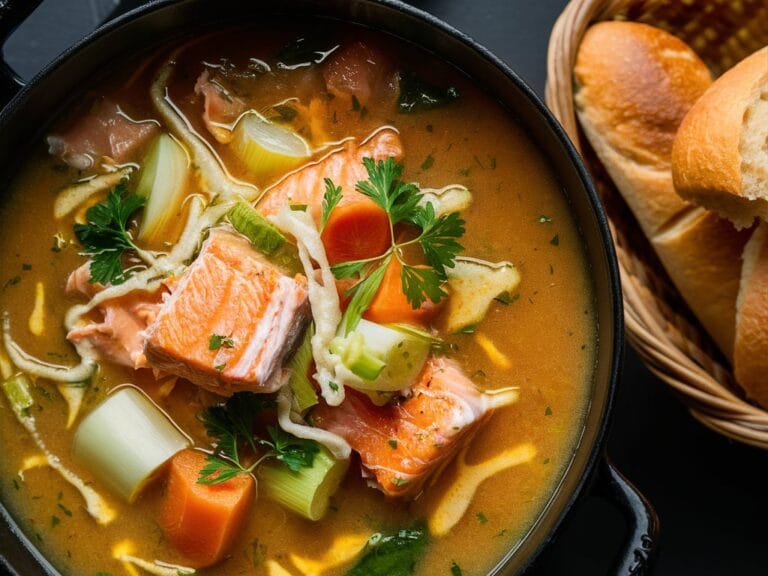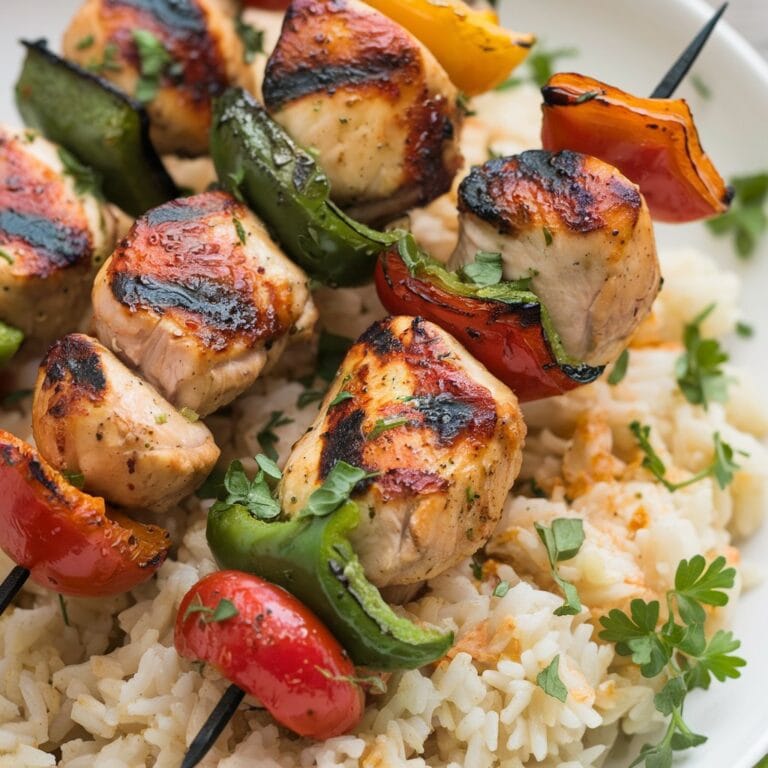What is the Rule for Brine? A Comprehensive Guide
What is the Rule for Brine? A Comprehensive Guide
Brining is an age-old culinary technique that has gained immense popularity due to its transformative effect on meat. Whether you’re cooking lean cuts like chicken breasts or preparing a festive whole turkey, the brining process can significantly enhance the flavor, tenderness, and moisture of your dish. The brining process helps meat stay juicy, adds depth of flavor, and acts as a buffer against overcooking. This guide will provide a deep dive into the rule for brine, how it works, the different types of brining, and how to get the most out of this method.
What is the rule for brine?
At its core, brining is the process of soaking meat in a solution of water and salt, though the brine can also contain sugars, spices, herbs, and various flavorings. This method of soaking meat helps it absorb moisture and seasonings, making the final dish more succulent and flavorful. The purpose of brining is not just to season the exterior but to permeate deep into the muscle fibers, ensuring an even distribution of flavor and moisture.
Brining works particularly well for lean meats like chicken breasts, pork chops, turkey, and seafood, which tend to dry out during cooking. By following the correct brine rules, you can ensure your dishes stay moist and tender.
The General Rule for Brine: Salt to Water Ratio
The foundation of any brine is the balance between salt and water. The most common and widely accepted rule for brining is using 1 tablespoon of kosher salt per cup of water. This creates a solution where the salt penetrates the meat, altering its protein structure to hold onto more liquid, resulting in juicier meat. For larger cuts like turkey or whole chickens, the rule is 1 cup of kosher salt per gallon of water.
While the base brine is simply salt and water, many chefs and home cooks add sugar to balance the saltiness, typically using a 1:1 ratio of sugar to salt. Herbs, spices, citrus peels, and other aromatics can be added to enhance the flavor profile.
However, the concentration of salt you use may vary based on the type of salt. Kosher salt is most commonly used due to its coarse grains, but if you’re using table salt, you’ll need to reduce the quantity because it is denser and finer. Generally, if a recipe calls for 1 cup of kosher salt, you should use around 2/3 cup of table salt.
Key Points on Salt Ratios:
- Kosher salt: Coarse grains, perfect for brining.
- Table salt: Finer grains, denser; adjust the quantity.
- Himalayan or sea salt: Used for their mineral content but can change the flavor subtly.
How Does the rule for brine
Work? The Science Behind It
Brining is rooted in basic food science. When meat is submerged in a saltwater solution, the salt begins to denature the proteins in the muscle fibers. These proteins unravel, allowing the meat to absorb and hold onto the water within the brine. As the brine infiltrates the meat, it infuses it with moisture, creating a natural barrier against drying out during the cooking process.
Additionally, the salt works to tenderize the meat by breaking down tough muscle fibers. This process is especially beneficial for lean meats that can become tough when overcooked. The more time the meat spends in the brine, the deeper the salt and moisture can penetrate, leading to a more flavorful and tender result.
The two primary outcomes of brining are:
- Increased moisture retention: The saltwater helps the meat absorb liquid, which reduces the chance of it drying out during cooking.
- Flavor enhancement: The flavors added to the brine, including salt, sugar, herbs, and spices, are absorbed by the meat, leading to a more flavorful end result.
Moisture and Flavor Retention
When you cook meat, it loses moisture. The brining process reduces this moisture loss. According to studies, a properly brined chicken can retain up to 30% more moisture than an unbrined one, making the end result much juicier and more flavorful. The salt and sugar in the brine also contribute to Maillard browning, enhancing the flavor of the meat’s surface when grilled or roasted.
Types of the rule for brine
: Wet Brining vs. Dry Brining
Brining can be done in two distinct ways: wet brining and dry brining. Each method has its own merits and is suitable for different types of meat and cooking methods.
Wet the rule for brine
Wet brining is the traditional method of brining, where the meat is submerged in a solution of water, salt, and often sugar and aromatics. This method ensures an even distribution of moisture and flavor throughout the meat, making it perfect for larger cuts or whole birds like turkey and chicken.
How to Wet Brine:
- Mix water and salt at the ratio of 1 tablespoon of kosher salt per cup of water or 1 cup of salt per gallon of water for larger cuts.
- Add any other ingredients to the brine, such as sugar, herbs, garlic, citrus peels, and spices.
- Submerge the meat fully in the brine and refrigerate for the recommended time (see section on Optimal Brining Times).
- After brining, remove the meat, rinse it under cold water to remove excess salt, and pat dry.
Benefits of Wet Brining:
- Adds moisture and flavor throughout the entire cut of meat.
- Ideal for large cuts or whole birds.
- Helps in cases where you need to retain moisture, especially for roasting or grilling.
Drawbacks of Wet Brining:
- Requires more space in the refrigerator for a large container of liquid.
- Can result in soggy skin if the meat is not properly dried before cooking.
Dry Brining
Dry brining, also known as salt rub, involves rubbing the meat with salt and seasonings without any additional liquid. The salt draws out moisture from the meat, which is then reabsorbed, carrying the salt and flavors into the meat. This method results in a crisper skin and can be easier to manage, especially if you’re working with limited space.
How to Dry Brine:
- Rub the meat evenly with salt, using 1/2 teaspoon per pound of meat.
- Optionally, add other seasonings like pepper, garlic powder, herbs, or paprika.
- Place the meat uncovered in the refrigerator for the recommended time (see Optimal Brining Times).
- Cook the meat without rinsing, as dry brining doesn’t leave excess salt on the surface.
Benefits of Dry Brining:
- Requires less space and no need for a large container.
- Results in crisper skin, especially for roasted chicken or turkey.
- Shorter brining time compared to wet brining.
Drawbacks of Dry Brining:
- May not distribute moisture as evenly as wet brining.
- Not ideal for very large cuts that require significant moisture retention, such as whole turkeys.
Optimal the rule for brine
Times for Different Meats
The brining time varies depending on the size and cut of the meat. Brining for too long can lead to overly salty and mushy meat, so it’s crucial to stick to recommended times. Here’s a comprehensive guide to how long you should brine different types of meat.
- Chicken Breasts: 15 minutes to 2 hours
Chicken breasts are lean and benefit from shorter brining times. For thin cuts, 15 minutes to 1 hour is enough. - Whole Chicken: 8 to 24 hours
Brining a whole chicken ensures even seasoning and moisture retention throughout. Keep it submerged for at least 8 hours. - Chicken Thighs and Wings: 30 minutes to 2 hours
Chicken thighs, being slightly fattier, can tolerate longer brining times compared to chicken breasts. Wings are smaller and require less time. - Turkey: 12 to 24 hours
The bigger the bird, the longer the brine. For turkeys, especially for holidays like Thanksgiving, brining for a full 24 hours is often recommended to get the flavors deep into the bird. - Pork Chops: 30 minutes to 2 hours
Brining pork chops helps keep them moist during grilling or roasting. Thin cuts may only need 30 minutes, while thicker chops benefit from longer brining. - Pork Tenderloin or Loin: 2 to 12 hours
These larger cuts of pork benefit from more extended brining times to ensure they stay moist throughout. - Shrimp or Fish Fillets: 15 to 30 minutes
Seafood brines very quickly. A short brining period enhances the flavor and keeps shrimp juicy. - Whole Fish: 1 to 3 hours
When brining a whole fish, the time is slightly longer to ensure full flavor penetration.
Factors That Influence the rule for brine
Time
There are several factors that can affect how long you should brine your meat, including:
- Salt Concentration: A higher salt concentration works faster, but it can also lead to over-brining if left too long. Stick to the 1 tablespoon per cup of water ratio for consistent results.
- Cut and Size of the Meat: Larger cuts like whole chickens and turkeys require longer brining times to ensure even penetration of the brine. Smaller cuts like breasts or wings require less time.
- Temperature: Always brine meat in the refrigerator or an ice-filled cooler to prevent the growth of harmful bacteria.
- Additional Ingredients: Brining times may change if you add acidic ingredients like vinegar or citrus juice, as they tenderize the meat faster.
Additional Ingredients for Brining: Beyond Salt and Water
While a basic brine contains only salt and water, you can add a variety of other ingredients to boost the flavor of the meat. Here are some commonly used additions:
- Sugar: Adding sugar to a brine balances the salt and promotes browning during cooking. For a traditional brine, use 1 cup of sugar per gallon of water, the same ratio as salt.
- Herbs and Spices: Fresh herbs like rosemary, thyme, and bay leaves can add complexity to the flavor. Whole spices like peppercorns, cloves, and coriander seeds are also common brining additives.
- Aromatics: Aromatics like garlic, onions, or ginger can infuse the brine with strong flavors that penetrate the meat.
- Citrus Peels: The zest or peels of lemons, oranges, or limes can add a bright, citrusy flavor to poultry, especially for grilling.
- Alcohol: Alcohol can carry flavors deeper into the meat. Consider adding a tablespoon of vodka or whiskey to your brine for unique flavor profiles.
Step-by-Step Guide to Brining Meat
Here’s a simple step-by-step guide to brining any type of meat:
- Prepare the Brine Solution: Start with 1 tablespoon of kosher salt per cup of water or 1 cup per gallon for larger cuts. Add any sugar, herbs, spices, or other flavorings.
- Submerge the Meat: Ensure the meat is fully submerged in the brine. If necessary, use a plate or a small weight to keep it underwater.
- Refrigerate: Place the container in the refrigerator, and allow the meat to brine for the recommended amount of time.
- Rinse and Dry: After the meat has finished brining, remove it from the solution and rinse it under cold water to remove excess salt. Pat the meat dry with paper towels.
- Air-Dry for Crispy Skin: If you’re roasting or grilling, allow the meat to air-dry uncovered in the refrigerator for a few hours before cooking. This step helps achieve crispy skin.
- Cook and Enjoy: Cook your meat according to your recipe. Brined meats tend to be more forgiving, so they’re less likely to dry out even if overcooked slightly.
Brining vs. Marinating: What’s the Difference?
While brining and marinating both enhance flavor and tenderness, they work in different ways. Brining uses a salt-based solution to add moisture and flavor deep into the meat, whereas marinades often rely on acidic ingredients like vinegar, wine, or lemon juice to tenderize and flavor the meat’s surface. Marinades don’t penetrate as deeply as brines, making them better suited for smaller cuts of meat or vegetables.
Frequently Asked Questions About Brining
Can you brine without salt?
No, the salt in brine is essential for the process to work. It alters the meat’s protein structure, allowing it to retain moisture. You can, however, reduce the amount of salt for personal preference, but don’t eliminate it entirely.
Can you over-brine meat?
Yes, over-brining can result in overly salty and mushy meat. It’s important to stick to the recommended brining times. If you do accidentally over-brine, you can soak the meat in cold water to remove some of the salt.
Do you rinse the meat after brining?
Yes, rinsing helps remove excess surface salt before cooking. Be sure to pat the meat dry afterward for the best texture, especially if roasting or grilling.
Is brining necessary for all meats?
No, not all meats require brining. Brining is particularly beneficial for lean cuts like chicken breasts, pork chops, and turkey. Fattier cuts like beef or pork shoulder typically don’t need brining unless you’re looking to add a particular flavor.
Conclusion
Brining is an incredibly effective way to enhance the juiciness and flavor of your meats. By following the basic rule of 1 tablespoon of kosher salt per cup of water and adjusting for different types of meat, you can master the art of brining. Whether you opt for wet brining for large cuts or dry brining for crispier results, this technique will revolutionize the way you cook. Add your favorite herbs, spices, and aromatics to customize the flavor, and always remember to follow the recommended times to avoid over-brining. Whether it’s for a festive Thanksgiving turkey or a weekday grilled chicken breast, brining will elevate your cooking to the next level.







